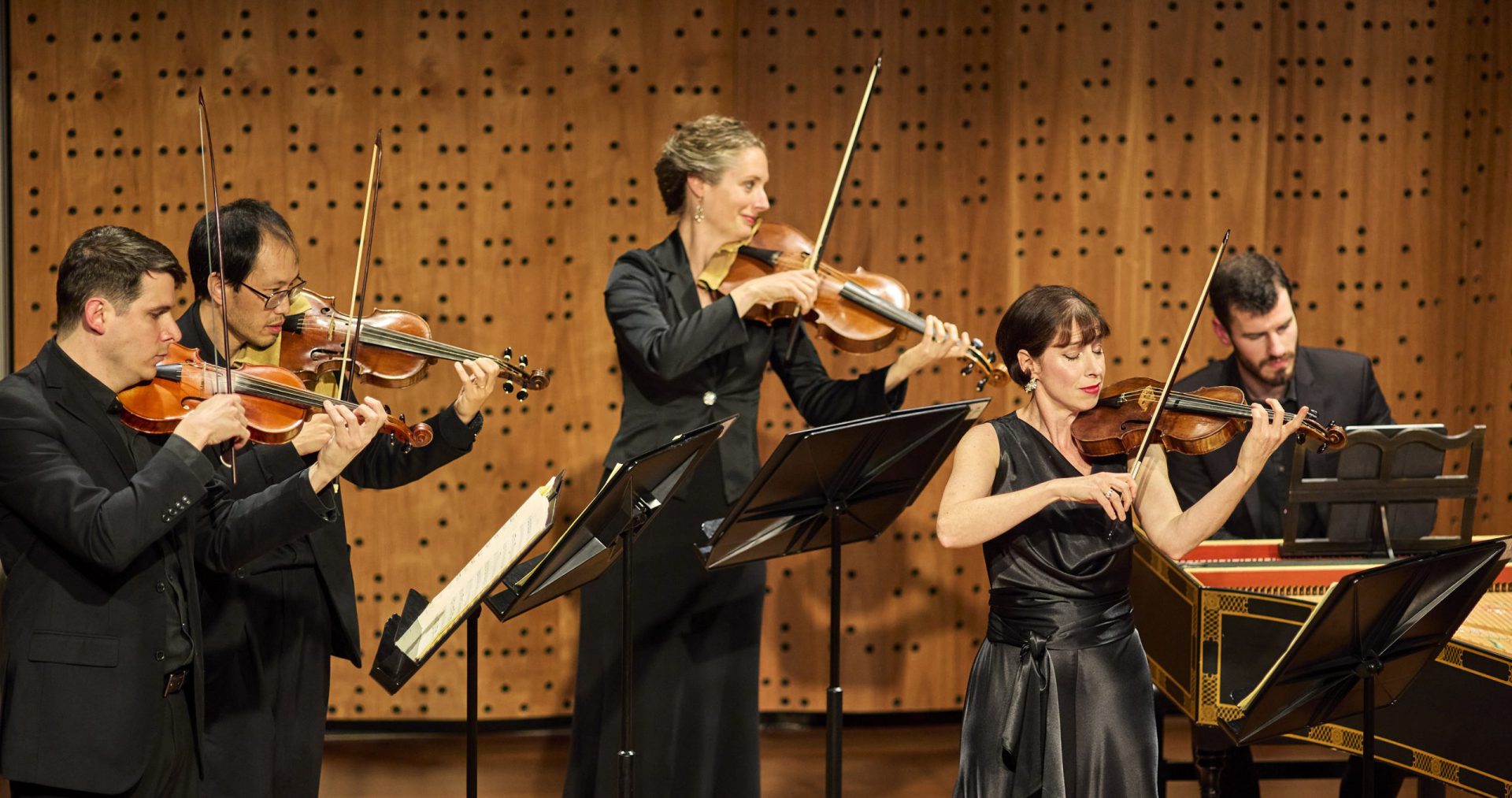Brandenburgs three centuries on.
Bach was obsessed with numbers. In particular, he was obsessed with the number six. God created the world in 6 days. Bach created 6 partitas for keyboard. 6 cello suites. 6 orchestral suites. And Six Concerts avec plusieurs instruments.
That is the original French title of a failed job application for the Margrave of Brandenburg – the so-called Brandenburg concertos.
The first two concerti are famously vibrant. They hark more of the hunting fields than of the salons of the drawing rooms of the 18th century Margraviate. Michael Dixon and Jenny McLeod-Snyed were on corni. The passages are infamously difficult to play but were played well on the whole. There were some hiccups in the oboe entries in the second movement, which was played at an unusually fast pace. But the highlight was by far the fourth movement, which harks back to Bach’s orchestral suites, particularly in its use of delightful little vignettes – almost like intermezzi – in trios. That is a very Italian technique. Rafael Font shone here. All this shows how cosmopolitan the courts of the German states must have been in the early 18th century.
The second movement of the second concerto has a truly ambling bass. Mikaela Oberg on flute seemed to be playing inegale at times, with playful ornamentations, all of which added a nice edge. The bass was at its best in the third movement, particularly in the tutti sections, which were very rousing.
The audience was resounding in its assessment that the third concerto was the best performed of them all. The third concerto is a veritable festival for the strings. From the very outset of the first movement, each performer showed they were at their best. The ensemble was positioned nicely in a semi-circle, to show how Bach tossed the same theme radially, from one side of the ensemble to the other.
Every principal violinist relishes the opportunity to make a meal of the spare two-note cadence of the third concerto. Madeleine Easton even wove in quotes from the Violin Concerto No 2 in E major.
The bass was truly on fire in the third movement. I have never seen a bass section that uniformly impressive in the third Brandenburg concerto. That is no mean feat. Each of the bass strings had to negotiate tough running passages by running across every extremity of the fingerboard. The precision and synchronicity was commendable. Especially is that so for a movement marked “Allegro” but which is, in truth, “Presto”.
The fifth is what draw me to the Baroque many years ago. It is hard not to be mesmerised by the whimsical harpsichord cadenza. Harpsichordist Neal Peres Da Costa had very neat articulation – and this worked wonders for the opening of the cadenza – but struggled with some of the running scales. He improvised an interesting intermezzo connecting the first two movements. His basso continuo realisations, and use of both manuals, in the second movement were delightful.
The world of the violinist is replete with viola jokes. But the sixth Brandenburg concert shows that the viola is no laughing matter. It is a serious instrument. And it is a serious family. Bach chucked out the violin and the violoncello, and gave us the warmth of the violas and the violas da gamba instead. The result is a warm, earthy, timbre. The melody in each movement is rollicking. As always, Karina Schmitz wowed the audience with her singular ability never to make a mistake.
